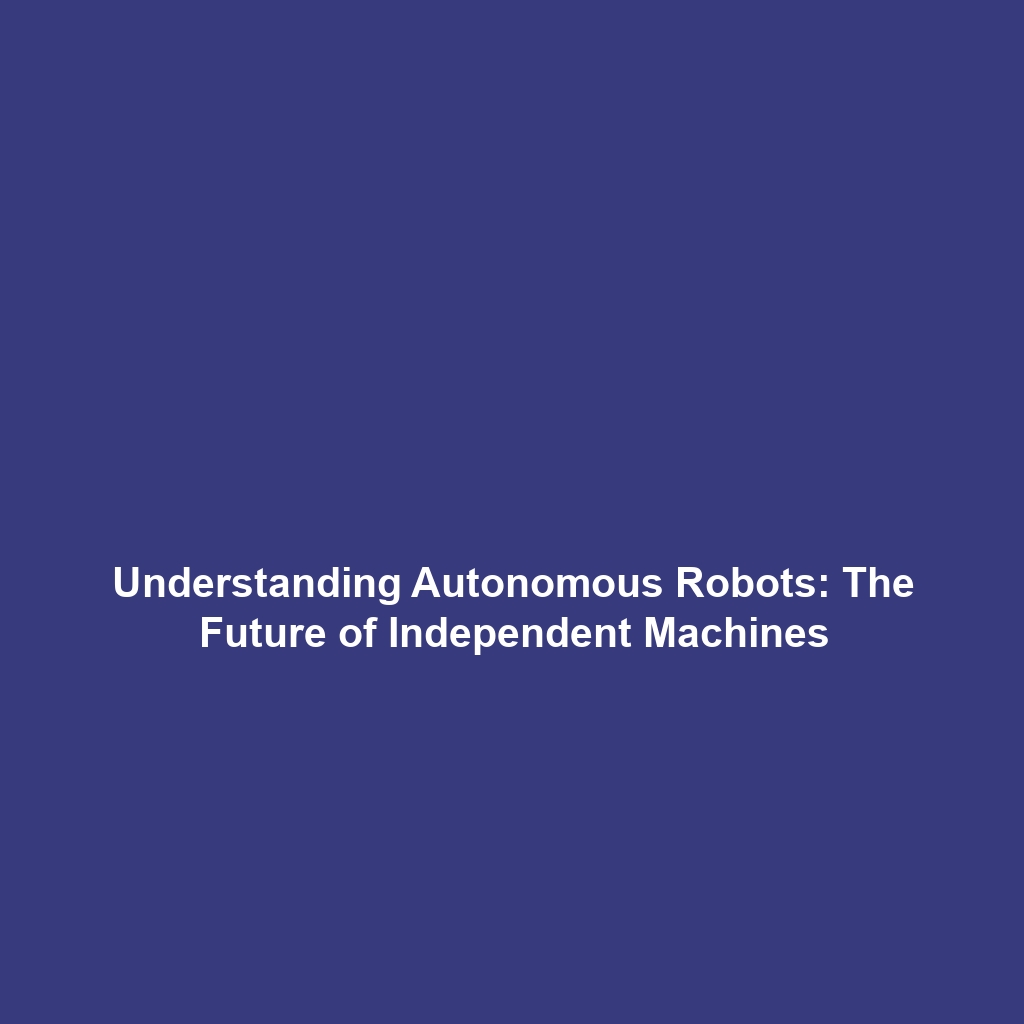Definition and Overview: Robots that Operate Independently Without Human Intervention
Introduction
Robots that operate independently without human intervention, commonly referred to as Autonomous Robots, are transforming the landscape of technology and automation. These advanced machines leverage artificial intelligence, sensors, and machine learning to execute tasks with minimal or no human oversight. Understanding their definition and overview is paramount, as it highlights their significance in various sectors including manufacturing, healthcare, and logistics. With the rise of autonomous technology, these robots are not just a trend, but a pivotal element shaping the future of work and society.
Key Concepts
To grasp the nature of Autonomous Robots, it is essential to explore key concepts that define and govern them:
Autonomy
Autonomy refers to the ability of robots to operate without direct human control. This feature is crucial in defining the category of Autonomous Robots.
Artificial Intelligence
AI enables robots to make decisions based on environmental data, learn from experiences, and improve their performance over time.
Sensor Technology
Equipped with various sensors, Autonomous Robots perceive their surroundings, allowing them to navigate and interact with the physical world effectively.
Machine Learning
This allows robots to adapt their actions based on past interactions and outcomes, enhancing their operational capabilities.
Applications and Real-World Uses
Robots that operate independently have numerous practical applications across different sectors:
- Manufacturing: Autonomous Robots streamline assembly lines, improving efficiency and reducing the need for human labor in repetitive tasks.
- Healthcare: These robots assist in surgeries, manage medications, and even provide companionship to patients.
- Logistics: Autonomous delivery robots are revolutionizing the supply chain by enabling contactless delivery solutions.
- Agriculture: Autonomous tractors and drones facilitate precision farming, ensuring better crop management and resource utilization.
Current Challenges
While the potential of Autonomous Robots is vast, several challenges must be addressed:
- Technological Limitations: Current sensors and AI technologies may not be sufficiently advanced for all tasks.
- Ethical Concerns: The deployment of autonomous systems raises questions about job displacement and accountability.
- Regulatory Issues: There lacks a comprehensive framework governing the use of Autonomous Robots in public spaces.
- Safety Risks: Ensuring the safety of both robots and humans during interactions is critical.
Future Research and Innovations
The landscape of Autonomous Robots is rapidly evolving, with several innovations on the horizon:
- Next-Gen AI: Breakthroughs in machine learning could lead to even more adept decision-making capabilities.
- Enhanced Sensors: Improved sensor technology will enable better navigation and obstacle avoidance.
- Collaborative Robots: Future research may lead to robots that can work alongside humans seamlessly.
- Blockchain in Robotics: Utilizing blockchain for data security will improve trust in autonomous systems.
Conclusion
Robots that operate independently without human intervention are crucial in the evolution of Autonomous Robots. Their potential applications, coupled with ongoing innovations, highlight both exciting opportunities and important challenges. Understanding these facets is vital for stakeholders across industries. As we move forward, continued research and responsible implementation will determine the positive impact Autonomous Robots will have on society. For more insights on robotics technology, explore our articles on robotic innovations and future technologies in automation.
